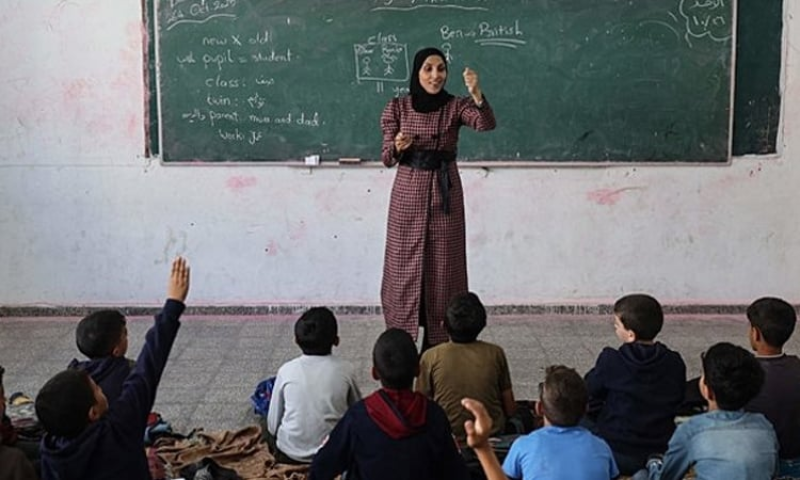- অতিথি পাখির বিচরণ আর দুষ্টুমিতে নান্দনিক হয়ে উঠেছে কুয়াকাটার চর বিজয় |
- Remittance inflow exceeds $632 million in first six days of Dec |
- 18 migrants die as inflatable boat sinks south of Greek island of Crete |
- TIB for polls manifesto vows to curb misuse of powers and religion |
- Khaleda now not fit for travelling: Medical Board |
Gaza Children Gradually Return to School After Two Years

Gaza Children Gradually Return to School After Two Years
The UN agency for Palestinian refugees (UNRWA) announced this week that, following the recent ceasefire in Gaza, some schools in the territory have begun reopening, with children gradually returning to classes.
UNRWA chief Philippe Lazzarini said on X Tuesday that more than 25,000 schoolchildren have already joined the agency's “temporary learning spaces,” while around 300,000 will continue lessons online.
At Al Hassaina School in western Nuseirat in central Gaza, classes resumed on Saturday despite a shortage of available classrooms.
Eleven-year-old student Warda Radwan expressed her excitement at returning to learning. “I am in sixth grade now, but I lost two years of schooling because of displacement and the war,” she said.
During the two-year conflict between Israel and Hamas, Al Hassaina, like many other UNRWA facilities, served as a shelter for dozens of displaced families. Evidence of their stay remained in the form of laundry lines strung across the school’s three floors.
Radwan explained that classes are restarting slowly as the school is gradually cleared of families. “Then we can continue learning like we did before,” she said.
In the school courtyard, young girls lined up for the morning assembly, performing stretching exercises under teachers’ supervision while chanting, “Long live Palestine!”
Inside classrooms, about 50 girls sat on the floor with no desks or chairs, copying lessons from the blackboard into their notebooks and responding enthusiastically to teachers’ questions. Older girls in their teens faced the same conditions.
Jenin Abu Jarad, a relative of one student, expressed relief at seeing children back in school. “Since October 7, there hasn’t been any school for our children. During this time, all they could do was fetch water, get food, or play in the streets. But thankfully, about a week to ten days ago, schools began reopening gradually,” she said.

